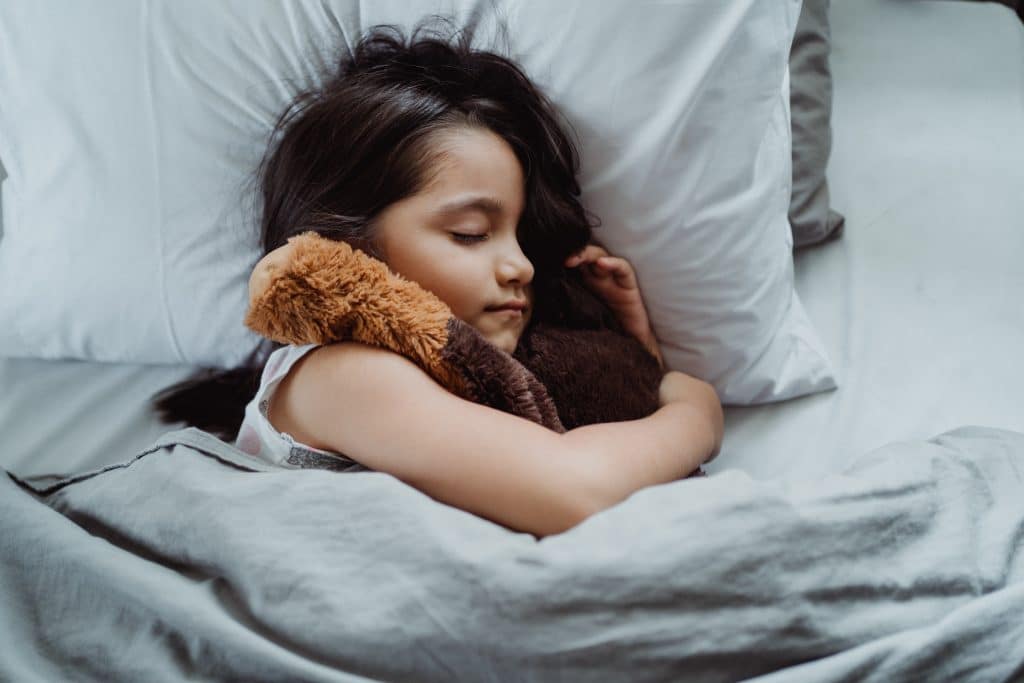Have you ever encountered a sea of choices when shopping for your child? I know I have. Today, we’re exploring the topic of weighted blankets for autism, a tool that’s been making waves in the therapeutic world. Imagine the comforting sensation of a warm hug; these blankets aim to emulate that. They’re designed to help soothe, calm, and improve sleep quality. But with so many options, how do you choose the right one? In this blog post, we’ll navigate through the sea of options, highlighting the best-weighted blankets specifically designed for children with autism. We’ll cover everything from the science behind their effectiveness to tips on selecting the right one. We’ll even spotlight some top-rated picks so you can make an informed decision. Let’s begin this journey to find the perfect weighted blanket for your child.
Read More: Autism and Social Anxiety
Table of Contents
Understanding the Benefits of Weighted Blankets for Autism
Weighted blankets, as their name suggests, are heavier than your average blanket. They’re filled with plastic pellets or glass beads to add weight. But what makes them so special for kids with autism? Let’s break it down.
Firstly, these blankets provide sensory input. They apply a deep pressure sensation akin to a firm hug or a massage. This sensation can be incredibly calming and relaxing for kids with special needs. It’s a bit like having a personal, portable hug that they can take with them wherever they go.
Improving Sleep with Weighted Blankets
For many parents, getting their neurodivergent kids to sleep can be a real challenge. But on the other hand, weighted blankets can be a game-changer. They’re often used as an intervention strategy to improve sleep in children with autism who have sleep impairments. The added weight of the blanket provides a comforting, secure feeling that can help kids fall asleep faster and stay asleep longer.

Read more: Hug Sleep Wrap Review
For instance, a study published in the Journal of Sleep Medicine and Disorders found that participants who used weighted blankets reported a calmer night’s sleep with fewer disruptions.
Therapeutic Use of Weighted Blankets
Weighted blankets aren’t just cozy; they also have therapeutic use for autism due to sensory integration. The pressure from the blanket can help kids with autism feel more grounded and secure, reducing anxiety and promoting a sense of well-being.
Moreover, weighted blankets have shown positive results not just for autism but also for ADHD and anxiety. They help to create a calming environment, reducing stress and promoting relaxation. Above all, they provide a non-invasive, drug-free form of therapy that can be easily incorporated into daily routines.
Goally | The Tablet for Neurodiverse Kids

Choosing the Right Weighted Blanket
When selecting a weighted blanket for your child, consider a few things. Firstly, the weight of the blanket is crucial. A general rule of thumb is choosing a blanket about 10% of your child’s body weight. Secondly, you’ll want to consider the material. Some kids might prefer the softness of a cotton blanket, while others might find a minky fabric more comforting.
National Autism Resources, for instance, offers calming weighted blankets for those with special needs. These blankets are designed with comfort and therapeutic benefits in mind, making them a great choice for kids with autism.
Considerations and Precautions
However, weighted blankets may not work effectively for autistic people overwhelmed and irritated by heavy touch. They may also be unsuitable for people with certain medical conditions, including chronic respiratory or circulatory issues, sleep apnea, asthma, low blood pressure, type 2 diabetes, epilepsy, and claustrophobia.
It’s always best to consult a healthcare professional before introducing a weighted blanket into your child’s routine. This ensures the safety and well-being of your child, above all else.
Goally | 100+ Streaming Video Classes
Does your child need some extra guidance on building essential life skills? Goally’s skill building tablet for kids includes a TV app that has the most robust video library of skills training videos for kids. Ranging from content like “How to Brush Your Teeth” to “How to Make Friends at School,” we have dozens of interactive video lessons for kids with thinking and learning differences.

HERE’s a video explaining how to works.
Wrapping Up
In short, weighted blankets can be a valuable tool for kids with autism, offering sensory input, improving sleep, and providing therapeutic benefits. But remember, it’s not a one-size-fits-all solution. Every child is unique, and what works for one might not work for another. Consider your child’s needs and preferences, and consult with a healthcare professional before making a decision. With the right approach, a weighted blanket could be just the comforting companion your child needs.
FAQs About Weighted Blanket Autism
How can weighted blankets help children with autism? Weighted blankets can provide deep pressure stimulation, which can help calm the nervous system and reduce anxiety, which can be especially helpful for children with autism who may have sensory processing challenges. What should I look for when choosing a weighted blanket for my child with autism? When choosing a weighted blanket, you should consider your child's size and weight, as well as the blanket's size, weight, and material. It's also important to choose a blanket with evenly distributed weight to ensure safety and effectiveness. Can a weighted blanket be too heavy for my child with autism? Yes, a weighted blanket can be too heavy for a child with autism. It's important to choose a blanket that's appropriate for your child's size and weight, with a general rule of thumb being no more than 10% of their body weight. Are there any safety concerns with using a weighted blanket for my child with autism? Yes, there are some safety concerns with using a weighted blanket for children with autism. It's important to choose a blanket with evenly distributed weight, not to use a blanket that's too heavy for your child, and to monitor your child while using the blanket. How long should my child with autism use a weighted blanket? The length of time your child should use a weighted blanket can vary, but it's generally recommended to start with shorter periods of time, such as 15-30 minutes, and gradually increase as tolerated. It's also important to consult with a healthcare professional before using a weighted blanket.
This post was originally published on 12/01/2022. It was updated on 02/09/2024.

Goally
We help parents teach their kids life skills, like doing bedtime and morning independently. Backed by science, we incorporate evidence-based practices and expert-informed designs in all of our apps and content.





